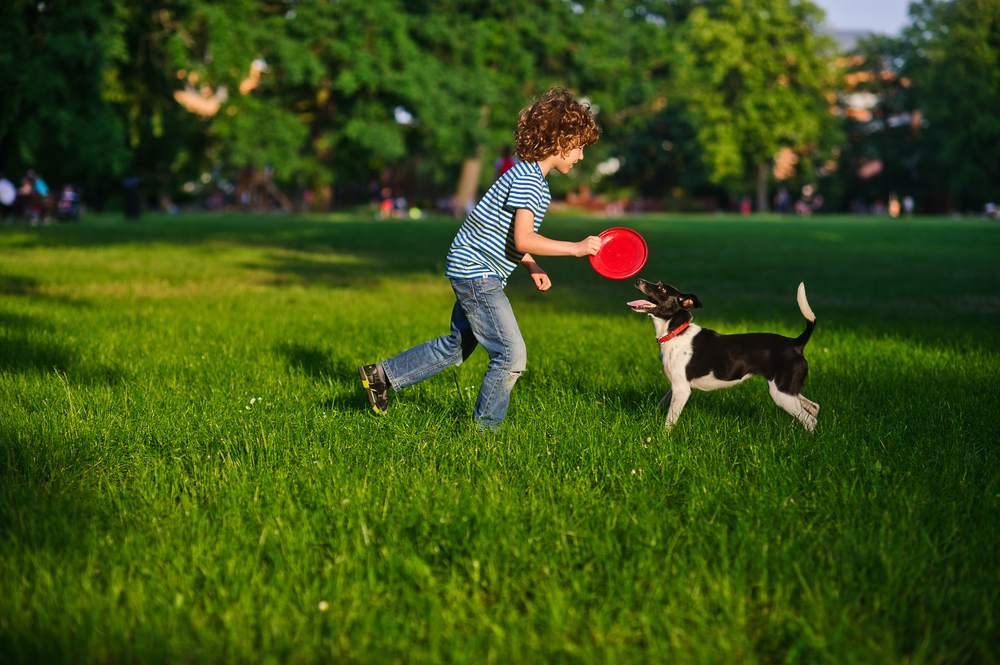Autistic children face unique challenges in communication, emotional regulation, and social interaction. As a parent, you’re constantly looking for ways to support your child’s development. One of the most effective ways to do this is by introducing a dog into their life. Having dogs for autistic children has been proven to reduce stress, improve communication, and provide emotional support for kids with Autism Spectrum Disorder (ASD). Let’s explore the many reasons why dogs for autistic children can make such a significant impact.
Dogs and Autism: A Perfect Match
For children with autism, the world can often feel overwhelming. Sensory overload, social anxiety, and difficulty communicating can all contribute to daily challenges. Dogs, with their non-judgmental nature and loving presence, offer the kind of support that many autistic kids need to feel more secure and understood.
Here are some of the key reasons why dogs are incredibly beneficial for autistic children:
Encouraging Nonverbal Communication

A significant number of children with autism are nonverbal or have difficulty expressing themselves through speech. While traditional forms of communication can be stressful, interacting with a dog offers a gentle, nonverbal way to connect. Dogs communicate primarily through body language—tail wags, nudges, and other movements—which teaches children the value of nonverbal cues. This can help kids with autism understand that communication isn’t limited to words, building their confidence and reducing anxiety around social interactions.
Social Lubricants and Icebreakers
One of the toughest challenges for autistic children is engaging with others. Dogs can serve as social lubricants, helping to bridge the gap between an autistic child and their peers. Imagine your child playing with a dog in the park—other children may naturally join in, making it easier for your child to be part of a social activity without the pressure to speak. Dogs also make great conversation starters, helping autistic kids practice their communication skills in a stress-free environment.

Emotional Support During Meltdowns
Autism meltdowns are often misunderstood as tantrums, but they are actually a result of sensory overload or emotional overwhelm. In these moments, a dog’s presence can be incredibly calming. Trained emotional support dogs can detect when an autistic child is about to have a meltdown and respond by snuggling up or offering gentle licks, which can help regulate the child’s emotions. This soothing interaction can help reduce the intensity of a meltdown and offer a sense of security.
For families considering adding a dog to their household, understanding the realities of dog ownership is crucial. Check out our tips for first-time dog owners here to learn how to prepare for your new furry friend.
Reducing Stress and Anxiety
It’s well-known that dogs have a natural ability to reduce stress. Research from Johns Hopkins Medicine shows that petting a dog lowers cortisol (the stress hormone) and increases oxytocin (the feel-good hormone). For autistic children who often struggle with anxiety, having a dog can provide a comforting routine. This sense of calm can be invaluable. Simply petting or spending time with their dog can serve as a form of sensory therapy. It helps them relax and feel more at ease in their environment.

Promoting Independence and Responsibility
Owning a dog is not just about companionship; it also teaches important life skills. Additionally, for children with autism, taking care of a dog—feeding, brushing, walking—can encourage a sense of responsibility and boost their confidence. Furthermore, these small tasks help autistic children develop independence in a safe and supportive way. Letting your child be part of the decision-making process, such as choosing which dog to adopt, can further enhance their self-esteem and emotional development.
Dogs as Protective Buffers
Many autistic children experience challenges in public spaces where sensory stimuli can become overwhelming. Dogs can act as protective buffers, helping to shield children from overstimulation. If a dog wears a service dog vest, it can also alert others to the child’s invisible disability, reducing awkward or intrusive social interactions. People are often more understanding when they see a service dog, giving your child the space they need without judgment.
Choosing the Right Dog for Your Autistic Child
When considering adding a dog to your family, it’s essential to involve your child in the process. In fact, autistic children often have strong bonds with animals they choose themselves, and this connection can significantly enhance the benefits of having a dog. Moreover, rescue dogs can be especially rewarding, as they teach children empathy and the importance of giving love to a pet in need.
The best dog for an autistic child is one that matches your child’s personality and energy level. Some breeds, such as Golden Retrievers and Labradors, are known for their calm and friendly demeanor, making them ideal companions for children with autism.
Conclusion
For autistic children, a dog can be more than just a pet—it can be a life-changing companion. Dogs can improve communication skills, offer emotional support, and reduce anxiety. The benefits of dogs for children with Autism Spectrum Disorder are undeniable. If you’re a parent of an autistic child, consider bringing a furry friend into your home. The bond they form will enhance your child’s daily life and provide love, comfort, and understanding in ways that words cannot.
By adding a dog to your autistic child’s life, you’re not just getting a pet. You’re giving your child a supportive companion who can help them navigate the world with more confidence and ease.




